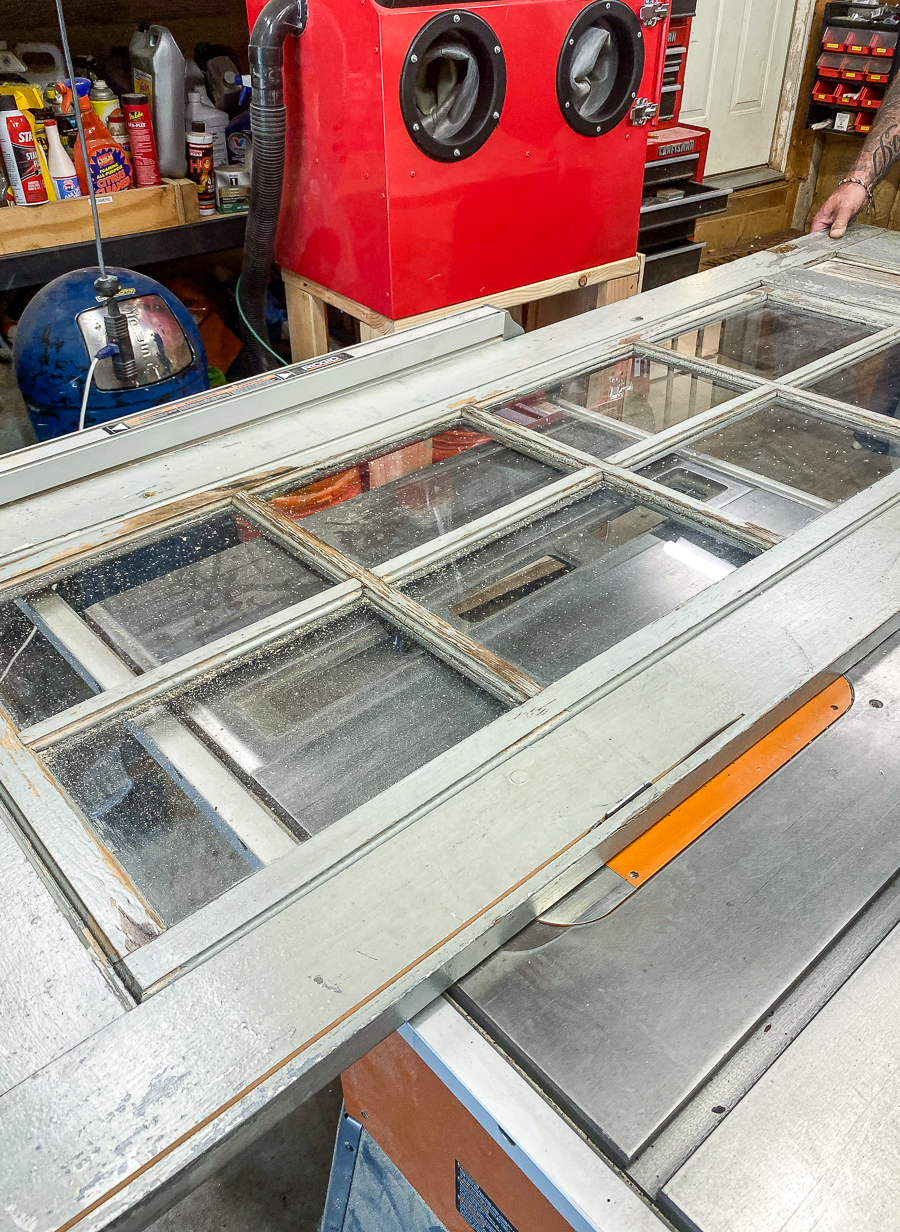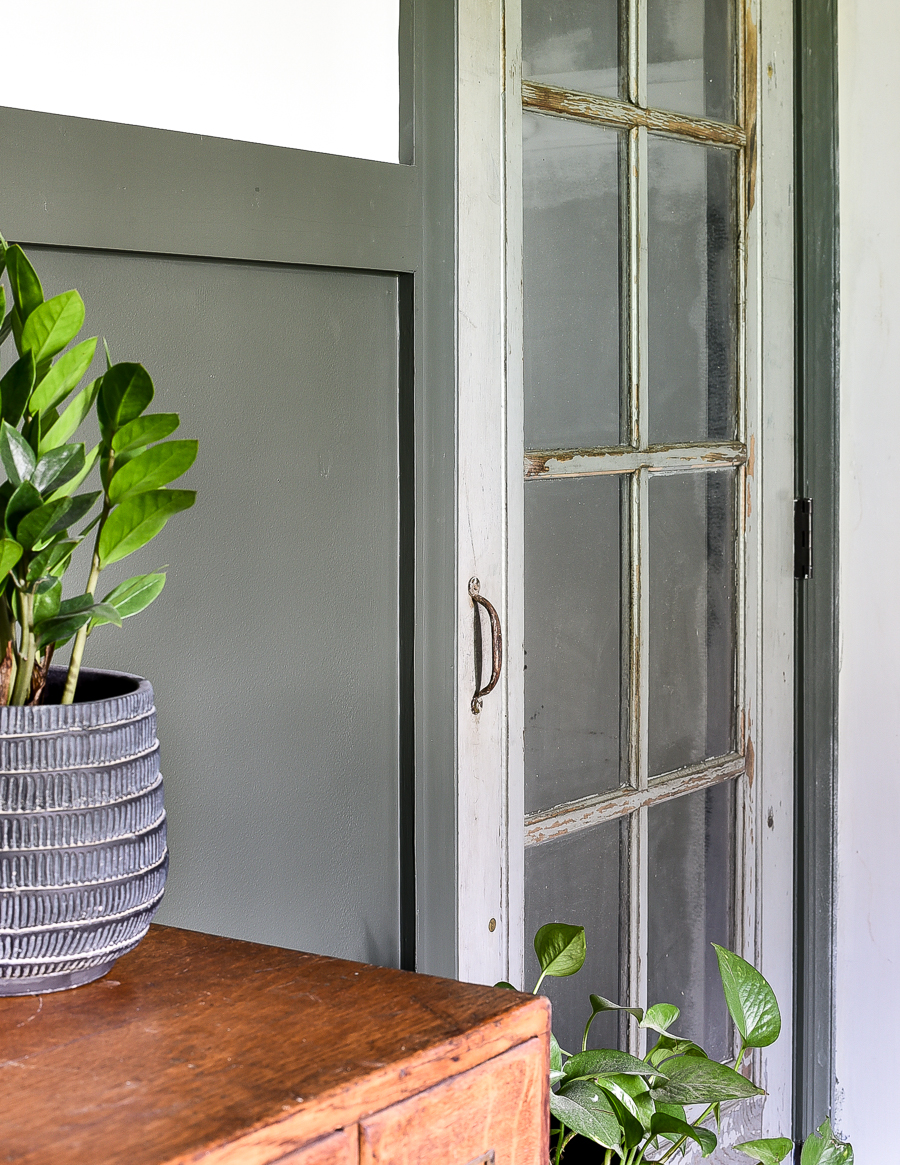How to clean, seal and add character with a chippy antique door!
I didn't make as much progress on the office as I would have liked, but I did get the "new" office door hung, which is exciting!
For as long as I can remember, I have wanted to add an old door to my home, unfortunately, there has never been a good place for one....until now.
The closet door in my office is the only original door left in the house. It was the perfect place to have fun and add an old chippy glass antique door.
I started looking on Facebook Marketplace for an old door that was mostly glass and full of character. I then remembered I had an old door in my garage that I bought a few years ago to use in my vintage booth. It wasn't quite the right size, but I had an idea to make it work in my office.
SUPPLIES NEEDED TO CLEAN AND SEAL AN OLD LEAD PAINT DOOR
*** I'm not a professional, but these are the steps I took to clean and seal an antique lead paint door***
- LA's Totally Awesome (or another similar cleaner)
- 150 Grit sandpaper or sanding block
WHAT IS LEAD PAINT?
Lead paint or lead-based paint is paint that contains lead. Lead was added to accelerate drying, increase durability and resist moisture.
HOW CAN YOU TELL IF PAINT CONTAINS LEAD?
Lead paint was banned for residential use in 1978, therefore, paint used before this time most likely contained lead. The most telling sign of lead paint is its distinctive "alligatoring" crackle and wrinkle appearance as it deteriorates.
Lead paint test kits are also available if you prefer to test your paint for lead.
WHY IS LEAD PAINT DANGEROUS?
Dangerous toxins from lead paint can be inhaled, ingested or absorbed through the skin. Lead paint can be especially dangerous when it begins to chip or is sanded and particles are distributed through the air. Lead exposure can cause brain, kidney, liver and blood issues as well as learning disablities, seizures and death.Needless to say, lead paint is nothing to mess with!
Here are the steps I took to make sure I was properly protected while I cleaned and sealed the antique lead painted door for my office.
STEP ONE:
To eliminate the risk of contaminating the house with lead, I took my door outside and got suited up in my respirator mask before I started scraping and sanding.
STEP TWO:
Using a paint scraper, I lightly scraped off any loose chippy paint then went over the entire door with 150 grit sandpaper.
***Scraping and sanding lead paint will produce hazardous particles to be released into the air. It's very important to always wear a mask when disturbing lead paint.***
STEP THREE:
I blew off all the dust, paint chips and debris that was left after scraping and sanding with an electric leaf blower. This is my absolute favorite way to quickly and easily clean off furniture after sanding.
STEP FOUR:
After sanding, I thoroughly cleaned the door with my favorite cleaner.
STEP FIVE:
I applied two coats of Minwax water-based satin poly to prevent chipping and to seal and protect the door.
Once I had the door cleaned and sealed it was time to trim it to fit the closet door jamb. I don't have a table saw, so we took the door to my neighbor who helped trim it for us.
Using a table saw, we cut about a half-inch off each side of the door. I then cut and attached the extra door pieces to the top and bottom of the door. It was the best solution to add a little extra height while still keeping the original character of the door.
To make installation easy, I used the hinges from the original office door to hang the new antique door, which worked out perfectly.
I still need to touch up the side of the door and I'm on the hunt for an old handle, but I'm loving how the door is looking so far.
This week, I hope to finish the back wall and if I'm being honest, I like the door against the Iron Ore wall much better than the green wall. I'm going to live with it for a few more days, but don't be surprised if I repaint everything in Iron Ore.















0 comments: